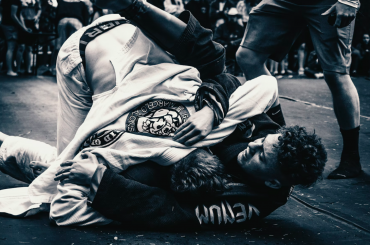Over in California’s San Francisco Bay Area, DJ Jody Amos says school homecoming dances are going big and DJs are cashing in. “We do five or six of these every October for the schools,” says the owner of the multi-award-winning Amos Productions.
Meanwhile, in the same Bay Area, Brian Doyle of Denon & Doyle Entertainment says his company reluctantly does only about a dozen school dances per month.
What’s going on?
Polling mobile DJs from around the country, we found differing perspectives when it comes to the value of doing school dances in the 21st Century.
In New York City, Carl Williams says school dances present an opportunity to showcase both his knowledge of new music as well as his mixing abilities—as a middle-aged man who loves to play their types of music.
And sometimes a school’s deep pockets can make these events quite profitable. “Depending on their budgets,” says DJ Carl, “some schools have their homecoming dances in decorated gyms or cafeterias; however, many of the events that I’m doing lately have been in luxury hotels.
“The kids are fundraising year-round so that they can have nice events that classmates will want to attend. They realize that having their dance in a nice hotel with a photo-booth—and, in some cases, a live band—can be a real treat for all those who attend.”
Another way DJ Carl is able to generate revenue for school gigs is through upsells, though often that extra money goes to other vendors who make these events more excitable for students.
“Up-lighting is an easy upsell, because female student planners and their advisors [moms] love it when the room can be pretty,” he explains. “I usually serve as the agent, so I typically sub-contract the lights, videos, live bands, and photo-booths from the experts.
“I find that one cannot just have music at these school events. Most kids today do not really dance at homecoming events unless it’s a line dance; however, they do like the slow dances. What’s funny is that most music they do like is not danceable music, so adding amenities is very important to keep them involved for the three or four hours.”
Williams says homecoming committees typically give out awards, plus they add lighting and video and ensure the students have access to WiFi, so they can share the experience with family and friends in real-time.
“The ability to share content live at the dance,” he says, “will ensure that future classes can get the same unique experiences at nice hotels with lots of cool things to keep the students from getting into trouble.”
JR Silva of Silva Entertainment in Orlando, Fla., says he could talk for hours on the current state of school dances, and especially high-school dances.
“I marvel at the schools that ‘get it’ and the ones that don’t,” says Silva. “The ones that ‘get it’ have budgets that truly delivery the ‘wow’ factor for guests. The schools and administrators that don’t have disproportionate budgets that only support mediocre events—promoted as spectacular, but leaving the guests asking themselves what they just did with their $60—and the only thing that truly is stunning is the revenue that ends up being generated for the school.”
In addition, Silva says he’s amazed at the over-promising and under-delivering that occurs by some DJs—those who seem to just want to capitalize on the four to six weeks of homecomings or proms.
“It helps if your salesperson is young and hip,” he adds, “even if he or she won’t actually be present at the event.”
Over in the Northwest, Adam Tiegs of Adams DJ Service in Seattle, Wash., says he wouldn’t touch school dances with a 10-foot pole.
“I won’t waste my time or money trying to earn business from schools,” says Tiegs. “Don’t get me wrong—I’ll gladly take a school gig if the circumstances are right, but nine times out of 10 they aren’t right.
“First, because of competition, prices for DJs for school dances have stayed low–and thus schools expect to pay low rates to anyone. Most schools only care about price, not how good the DJ is at mixing music or how many lights or other production elements they bring to the table.”
For example, Tiegs says he recently received a phone from a student looking to pay between $300-$350 for two hours of music for 300-plus kids—and for a Saturday night.
“My minimum for any event on a Saturday night is $1,250,” says Tiegs, “so for the most part, the good DJs in the area are doing other events like corporate gigs and weddings.
“We leave the school dances—the scraps—for the younger, more inexperienced DJs.”
Tiegs says another thing about his area of the Pacific Northwest is that there’s one multi-op and one “agency” (a company that subs out all their gigs to other DJs) that have the attentions of all the schools and districts.
“These two companies have the resources to market to and sell themselves to schools and school districts, and have succeeded in getting a majority of that type of business,” he says. “There are quite a few independent DJs here in the Seattle area who have worked for either of these two companies at one point in their DJ career. Heck, even I did! But these are stepping stones to get experience.”
Another challenge about marketing and selling to schools and districts, Tiegs says, is that every year PTAs constantly change, administrators change, teachers change and, of course, students change.
“Your clients always aren’t the same, and therefore it takes a lot of time and money to go after this business,” he explains. “I’m not going to trip over a dollar to pick up a penny, so therefore I don’t choose to go after this business. Every once in a while I’ll get an inquiry from a school that’s serious about upping the ante and going with someone who’s independent, but that’s only once every two or three years.”
In Ogunquit, Maine, Jerry Bazata of DJ Jaz Music & Entertainment says most schools have turned homecoming and winter dances into events to raise funds for the school. Therefore, he says, most are looking to book a DJ at rock-bottom prices, which includes an extravagant light show.
“On average, a Saturday-night school dance can pay between $150-300, while average prom committees have been budgeting $500,” says Bazata. “This is over a 50-percent decrease over the past two years, and for that reason many veteran DJs are no longer soliciting that market. Instead, the schools are looking to either students to provide the music themselves, such as renting a sound system and allowing one or more students to use iPods and laptops.
“To take it a step further, he’s now seeing advisers or teachers themselves getting into the act and trying their skills as a DJ.”
Bazata says quite a few in his market have taken the time to learn and understand what it takes to entertain and control a student dance, but for the most part he’s hearing stories of dances going horribly wrong.
“For the most part, the issues that still continue to plague the school dances are inappropriate dancing and music with questionable lyrics,” he says. “The administration has continued to place blame on talent or DJs for this issue and, as a result, a DJ now has to have their playlist approved before any event.
“I agree to a point with the safeguards being put in place, but the additional work and not being appropriately compensated for it results in myself no longer pursing this source of income.”
In the end, Bazata says he would rather not give up a prime Saturday night for a school dance, especially during the wedding season. “In the off-season,” he says, “there are other plenty of other opportunities—such as church dances, non-profit events, corporate events and winter weddings—that I can pursue with a reasonable rate of return.”
Meanwhile, in the Midwest, Blake Eckelbarger (aka DJ Sticky Boots) of The Music Place in South Bend, Ind., says he still does quite a few homecomings and fall/winter semi-formal dances, although he can remember three decades ago when the typical (and cheaper) school dances were his bread-and-butter source of income.
“Today, the trend in my market seems to be much more towards big semi-formal homecomings and other semi-formal dances,” he says, “and away from the simple after-game dances that traditionally schools held in the gym or cafeteria after a football or basketball game. That’s good for us, because we’re able to get higher rates for bigger production for these special dances versus the ones for which kids just roll in after a sports game.
“A decade ago, homecomings in this area were always right after the homecoming ballgame and they were casual. Now, like many other parts of the country, they are the night after the game—usually on a Saturday—and feature three hours with the kids all dressed up.”
As a result, Sticky Boots says his company is able to do very well with upsells. “Up-lighting is big, of course, as are larger sound systems, turntables, and also text-to-screen video messaging plus step-and-repeat photo backdrops,” he explains. “These are all typically things we could not sell easily for a 90-minute after-game dance. Schools’ budgets are higher for homecomings now, and we definitely market towards getting as big of a piece of the decorating budget as we can, in addition to the music budget.”
Although Sticky Boots says his production and gear for schools are some of the largest in his market, they’re not doing the huge, concert-level productions that some companies do for homecomings in larger markets.
“Still, we’re bringing in powerful moving heads, haze, trussing, and lots of LED washing and up-lighting—as well as about 20,000 watts of sound, with the larger setups. Decks are either Pioneer CDJ-2000 Nexus or Technics 1200s with a Rane 62 mixer. For sound, we’re using RCF on the top and Yorkville on the bottom. We’re trusted by schools that know that quality has a price and realize the difference is worth paying for.
“I know there’s a lot of other guys doing much bigger things than us, but I’ve been focused on schools for the last 27 years—my very first gig ever, at age 13, was actually a prom—and they’re still my absolute favorite gigs to do.
“In fact, I’d do only schools if I could!”








